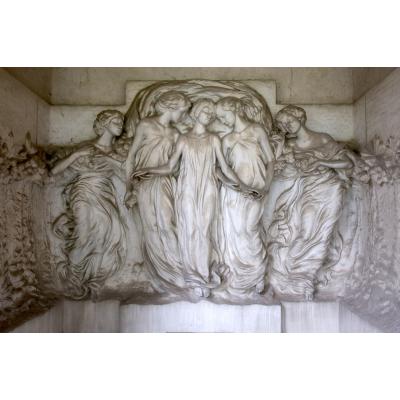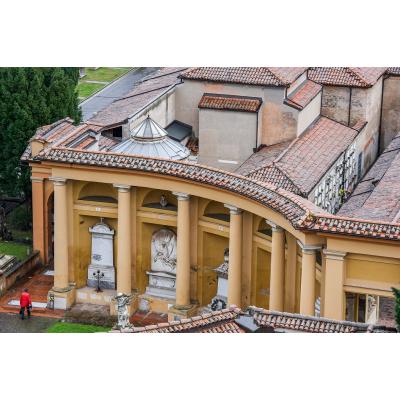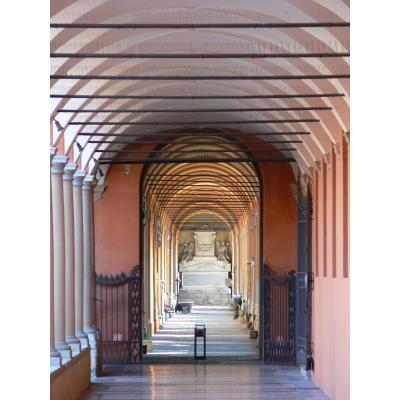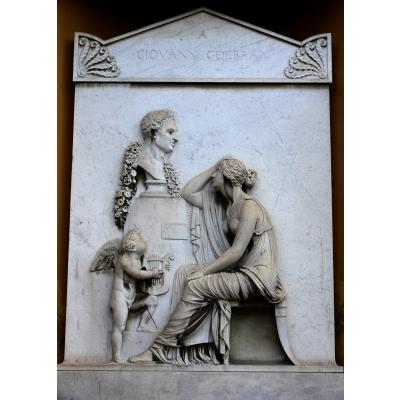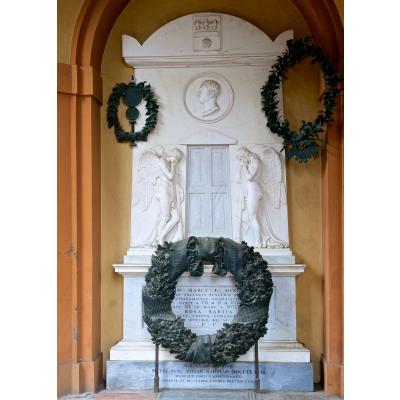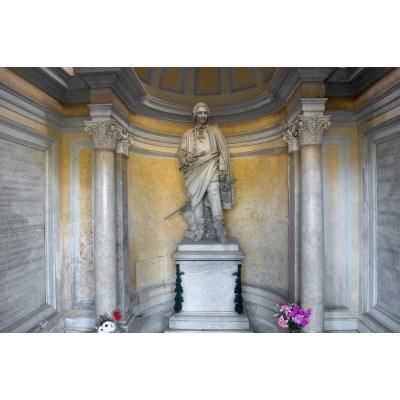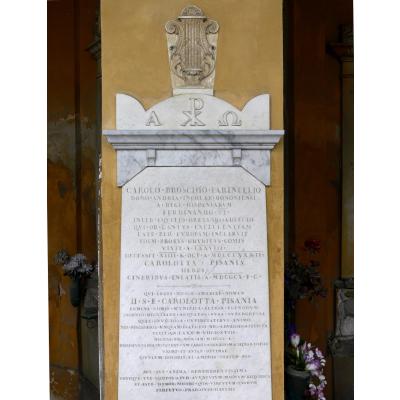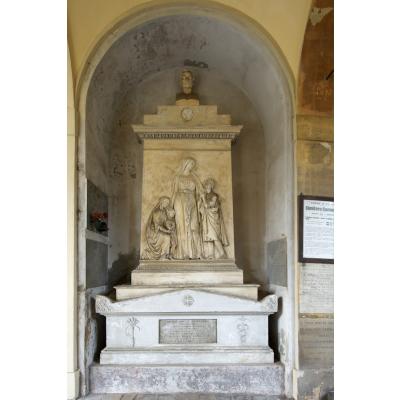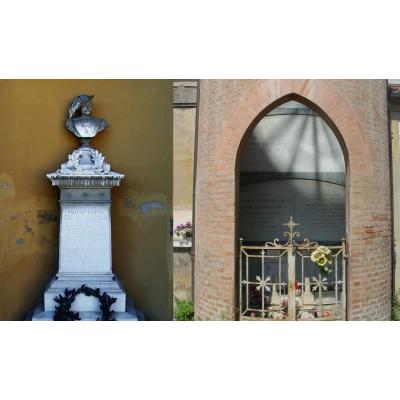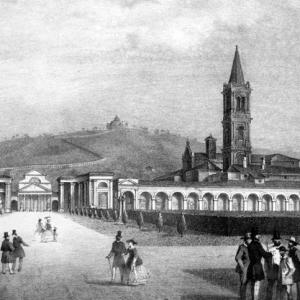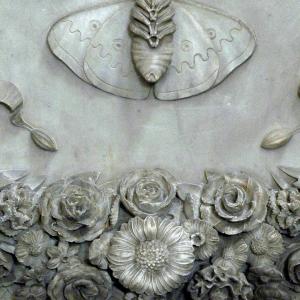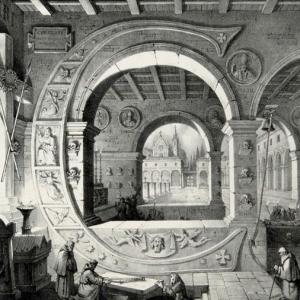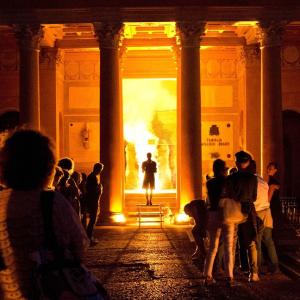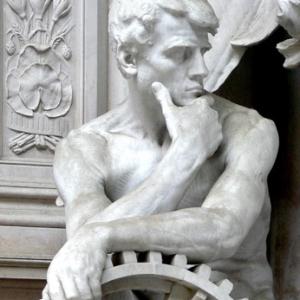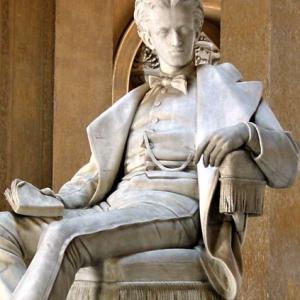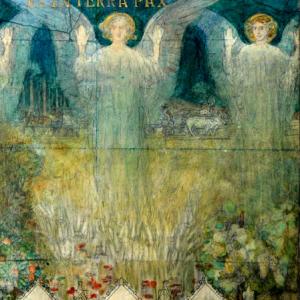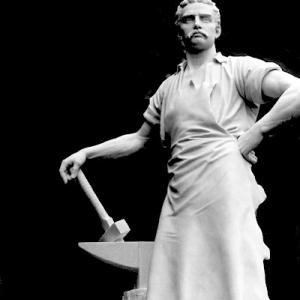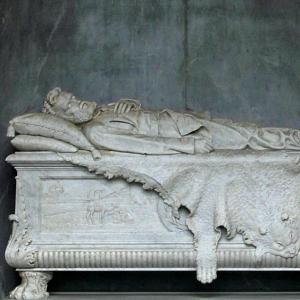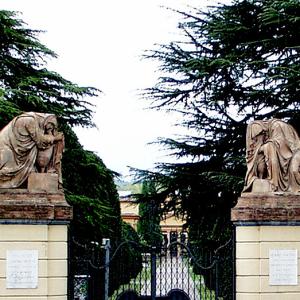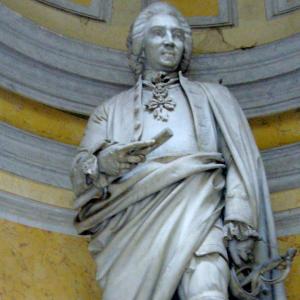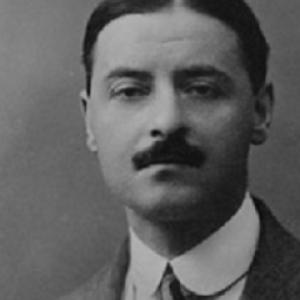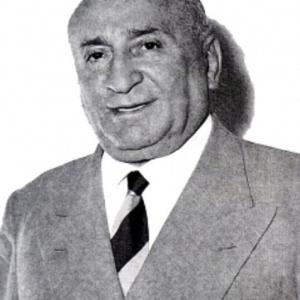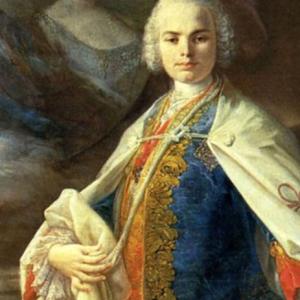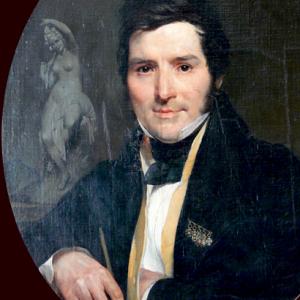Schede
The present boundaries of the monastery coincide exactly with Orto grande, Vigna Piccola, Spasseggi per li monaci, Bosco ed altre delizie (vegetable garden and vineyards of the monastery) as can be seen in the engraving by Girolamo Ruvinetti in XVII. In the plan attached to Descrizione del Cimitero (Description of the cemetery) edited by Zecchi in 1829 was described as “Area for the common burial of adults” and “Portico with monuments”.
Two plaques with a short Latin epigraphs are cemented in the two pillars of the Third Cloister, corresponding to the exit toward the main cloister. Both are dated April 1801 and record the names of two first adults buddies in the new cloister, while in the third cloister were buried young people. The burial of people without means who could not afford a permanent tomb was never less guaranteed by Municipal authority, unlike how it happened for centuries in urban cemeteries in the new cemetery guarantied a dignified burial and not just a mass grave. The prohibition against tombstones was compensated for by treating the common areas as gardens, planting flowers. The present Main Cloister is smaller than the original plan because in the 1930s was subdivides to create a new cloister which was called “Annex to the Major”. Taking all together it is the biggest part of the cemetery, demarcated by a simple portico constructed according to the the Ercole Gasparini design, even tough modified by later alterations. The Monumental entrance to the cemetery that was finished in 1809 with the incorporation of two large terracotta sculptures by Giovanni Putti called the “Piagnoni” or “Piangeroni” (The Moaners) is entirely faithful to the original project. The adjacent semicircle portico which is faithful rendition of Gasparini’s original design, the architect that was involved in the original project of the Certosa who has designed the long portico that connects Certosa to Arco del Meloncello by means of Portico of San Luca to the city. The building of the portico was began under his supervision in 1811 and was completed in 1834 with some modifications by Luigi Marchesini and Giuseppe Tubertini. The portico should have terminated in the Chiostro Maggiore south semicircle, but for economic reason the building work ended at the level of the Reno Canal and the semicircle instead of becoming a portico as in the North was redesigned as a complex incorporating structure of monuments and doric columns. One thing that helps to understand the order the portico was built is the age in which every monument was constructed. The oldest are found in the south side, among which several still exhibit the original plaster and scagliola. On the northern side every arch coincide with a small chapel most dated from the XIX century. The western portico holds monuments from the second part of the XIX century while the Eastern part contains monuments in bronze and marble dating from the end of the XIX century to the first decade of the XX century. Walking the perimeter enables to observe the development of Bolognese sculpture during the XIX century. It would take too long to make a list of all the important monuments but mention must be made of the works of Giovanni Putti (Ferlini, Legnani) and by his son Massimiliano (Canestri, Lipparini), Alfonso Bertelli (Pallotti), Carlo Monari (Magistrini, Battilani), Tullo Golfarelli (Gancia, Cillario). Among the works by foreign artists the colossal portrait of Pallavicini by Giovani Duprè in the elegant chapel designed by Antonio Zannoni is worth especial mention.
Monuments of interesting historical range from the impressive Hercolani Chapel designers by Venturoli. Most important of the monumental sculpture is that of Cincinnato Baruzzi which contains the body of Marco Minghetti (1818-1886) the most important bolognese of Risorgimento. There are lots of memories dedicated to artists and musicians, such as the big sarcophagi dedicated to the composer Stefano Golinelli (1818-1891) or the painter Luigi Serra (1846-1888); the arch with the portrait of the painter Achille Frulli and the sculpture of Giacomo de Maria; the big neoclassical stele dedicated to Giovanni Colbran requested by Gioachino Rossi, where there are the remains of his first wife Isabella Colbran and his parents; finally the sepulchre which hosts Carlo Broschi, called Il Farinelli, the most important castrato singer of the XVIII century. The Braccio nuovo (east side portico) and the borders of the field host differente sculptures made between the end of the XIX century and the 1950s, among them there are the ones of Tullo Golfarelli, Romano Franchi (Gatti Capi), Bruno Boari (Vigevani), Renaud Martelli (Largaiolli), Venanzio Baccilieri (Fava) and Sergio Cremonini (Zamboni).
Traduzione a cura della classe 3G, nell'ambito del progetto di Alternanza scuola-lavoro 2018/19 con il Liceo Ginnasio Luigi Galvani di Bologna.


